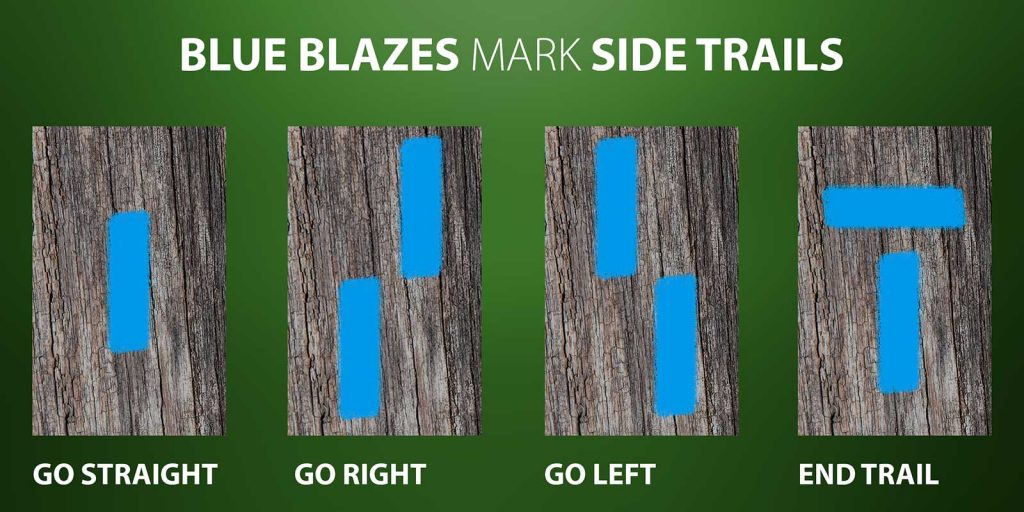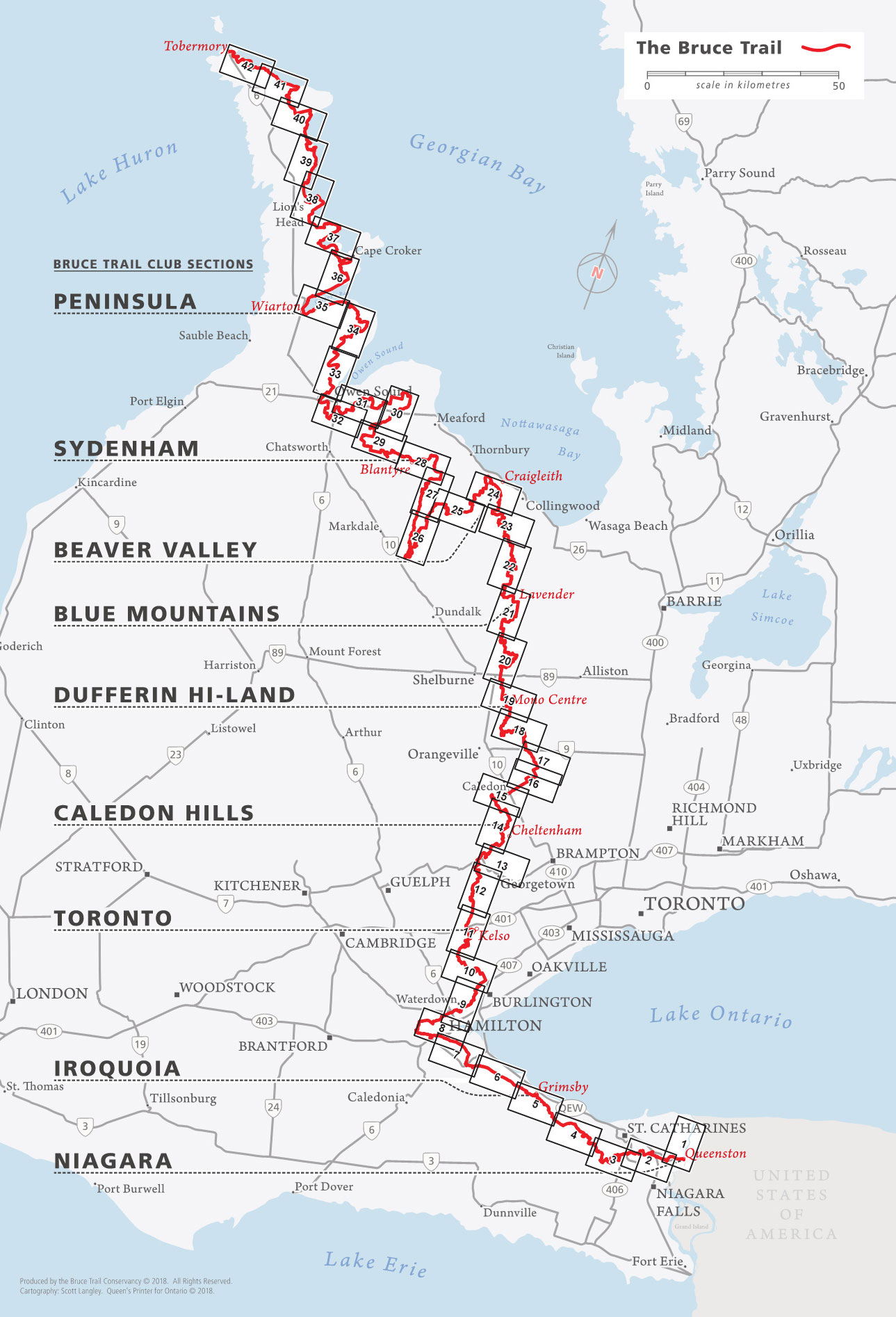Good blazing is the key to trouble-free route finding on the trail. Nothing annoys a hiker more than to “run out of” blazes – unless it is to follow a series of old blazes which should have been obliterated from an abandoned route.
Signs are important for identifying the Bruce Trail to the public, for reminding trail users of the code of behaviour expected of them, for providing information on how they may contact the Association, and for giving directional guidance and useful information.
The Bruce Trail blaze is a white, painted rectangle, 52 mm by 156 mm (2 “x 6”), oriented vertically.

The blue blaze indicates you are hiking on a Bruce trail side trail.

Official Bruce Trail Association (BTA) signs:
1. Diamond Trail Marker – two types
2. Access
3. Appreciation – private land
4. Overnight Rest Area (ORA)
5. Side Trail Information
6. Permissive and Non-permissive pictographs
7. Stock – special issue
8. Bruce Trail Association land
9. Custom
10. Trail Head
Philip Gosling, one of the four “founders” of the Bruce Trail, marked the first blaze in July 1962.
The plaque is on the trail just north of Cambellville Rd (near Appleby Line by Philip. Just north of the plaque at the 1 km mark, there is the start of the Philip Gosling Side Trail, leading to Hilton Falls Conservation Area.
More: Visit the trail, where Philip Gosling marked the first blaze in July 1962
DID YOU KNOW?
The Bruce Trail. Canada’s oldest and longest marked footpath – 900 km from Niagara to Tobermory. The Bruce Trail connects you to the wonders of the Niagara Escarpment.


